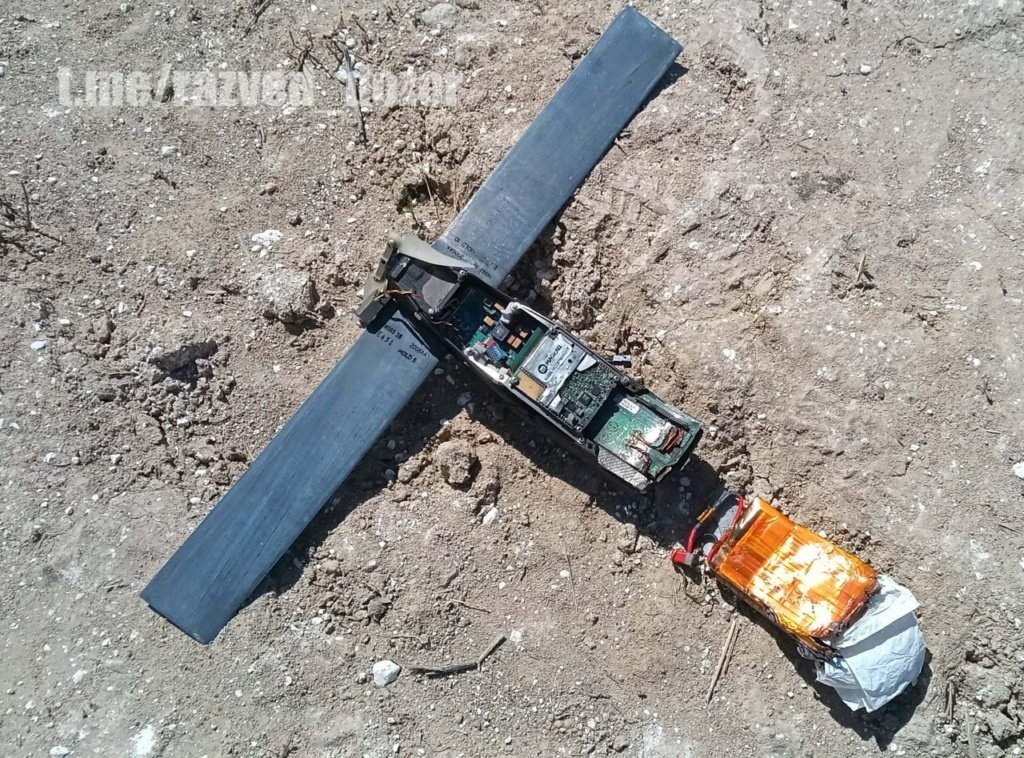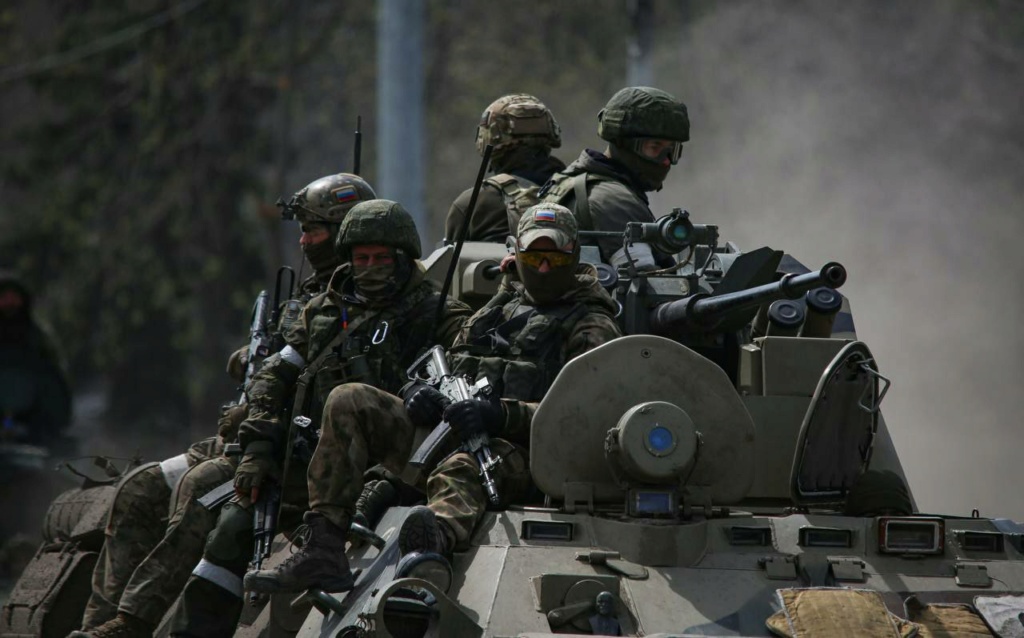Arkanghelsk wrote:The reason 70k troops is enough right now is that the artillery of 80 BTG is huge
Artillery assets attached to BTG are 3 to 1 in terms of ratio to manpower
I found this article that explains what a BTG is
https://www.rusi.org/explore-our-research/publications/commentary/getting-know-russian-battalion-tactical-group
I know there's a book about Soviet tactics written by Glantz, but I forgot wich, will try to find it.
My thoughts:
Some other historian buff misinterpreted the stalled Russian advance and thought that tanks are doomed because antitank missiles prevent breakthroughs and we are back to infantry-artillery battles like in 1916
I replied:
We have indeed returned to 1916 in which the tanks have dispersed among the infantry to give them support instead of concentrating them in a mass.
But what seems to us a step back is actually an innovation. In WWII the armored formations made the war on their own and the rest of the battles were infantry and artillery as in the WWI. Now we see that each Battalion Tactical Group is a combined arms and self-sufficient unit. To use a simile, instead of a handful of
Panzerdivisionen concentrated for decisive action, and the rest of the troops on foot, we now have Kampfgruppen all over the front.
It goes against the experience of the world wars, but I think the Russians were right when they made this doctrinal change in the 80s. The Americans do something similar with their "combat team"
On a superficial reading of the article I linked, and with my recent reading of "Forward into Battle- Fighting tactics from Waterloo to the Near Future" - Paddy Griffith I think am beginning to understand the change. It's hard for me because I am not a soldier and I lack the personal experience to understand how things run in the army.
I am reluctantly realizing that infantry alone can't do anything anymore, not without accepting heavy casualties, and always needs armor support, and that includes tanks. In the same vein, due to the proliferation of man-portable antitank weapons, tanks and infantry fighting vehicles need infantry to flush them out. And both need their own artillery support.
It goes against accepted wisdom. After all the lesson of WWI was that tanks had to be used en masse, as at Cambrai 1917 and Amiens 1918, and that lesson was again proven in France 1940, where the concentrated Panzer Divisions outnumbered on every instance the dispersed French tanks.
But as Griffith observed, more is not neccesarily better. The British failed at Normandy thinking massed tanks would break through German lines, while the Germans again and again proved combined arms is the key.
I was dismissive of the Battalion Tactical Group I first learned about when I read about the Ukrainians deployed their brigades like that. They seemed to me like the German
Kampfgruppen, improvised formations with whatever was available, the "brigades" were actually reinforced regiments short of infantry. I believe it was an accurate assesment, and that the downfall of the Ukrowehrmacht was that it had a lot of tanks and artillery, but didn't really have infantry willing to take and hold positions.
Perhaps it's a bad idea to mass several dozens or hundred of tanks like at Kursk and try to breakthrough with them. It only gives more targets to the antitank missiles, and Griffith reminded me that the concept failed in the Yom Kippur war in 1973. Book was written in 1981, so the lesson was very fresh.
I am beginning to think that rather than having an entire battalion of 40 tanks acting together it's actually more effective to split it between 3 composite battalions. Specially if the terrain is broken like in Donbass. No Prokhorovka style mass tank charges here.
It maybe also due to the fact that in practice, it's anyway impossible to command more than a battalion in a fight. I have read four volumes of Soviet tankmen wartime accounts (published by Pen & Sword in English) and I am impressed with the running theme that no matter how many divisions are involved, in the end battles are a sum of small units encounters at the company level, not massive tank battles like Gembloux, or Kursk or some actions in the North African desert.
I had attributed this that most accounts are from later in the war, from 1943-1945 and the Germans panzer divisions had broken down to smaller Kampfgruppen and there was seldom if ever more than a company of tanks gathered together at a single point anywhere.
From these and other infantry accounts I also knew it was not just because tanks were scarce but the downgrading of the German army later in the war due to attrition and the lack of competent commanders at the middle level, battallion and regimental. It's easy to train a lieutenant or captain to command a single platoon or at most a entire company, because the leader has only to command over what he can see, but when you have to juggle more than three units at the same time that's beyond the capabilities of most people, as it involves administration, management of resources and coordinating with other branches. You can't learn that on the job, as with a squad leader.
Effective middle commanders from battalion to division is what makes an army work, if not, no matter how good the general or the staff, the plans can't be carried out because there's no one in the middle to execute the orders effectively.
The conclusion, I understand why the Ukrainian army fights in penny packets, because it's not a proper army and can't do better. I understand why they can't field more than a few tanks at one place and time, a company at most.
I realize that for the Russian side even if dispersing tank companies to form the BTGs, they will still always have parity of numbers or superiority when meeting the Ukrop tanks, because though dispersed, the Russians move around entire companies, not a fistful of tanks
The thing that still don't understand is, given how dispersed the enemy is, why the Russians don't concentrate at some point at least a full battallion of 40 tanks, if only to achieve a local breakthrough. It should steamroll the enemy. I lose sleep at nights thinking about. Strange war.

I also have similar doubts regarding massed artillery but I have to finish this. I am missing a concentration of artillery of say, just a hundred pieces in a two kilometer frontage and with a massive artillery preparation of a few hours to blast everything to pieces and then go for a breakthrough.
With considerable reluctance I am slowly thinking that barrages like those in the First World War were a waste and maybe that concentration of cannons is overkill and we can do things better today.
But still, I don't understand this slow advance. It's like we are in WWI, if every battallion is a combined arms unit, why it's so hard and slow to take one village after the other? I don't think it's because the Ukrops are counterattacking incessantly like in WWI, though I have read reports that some places change hands a few times until taken by ours.
I don't understand anything, unless our guys have to kill hundreds of zombies (I propose to call ukrops that) for every advance they make, or as I fear, the number of troops is too small for the tasks set.







 sepheronx
sepheronx